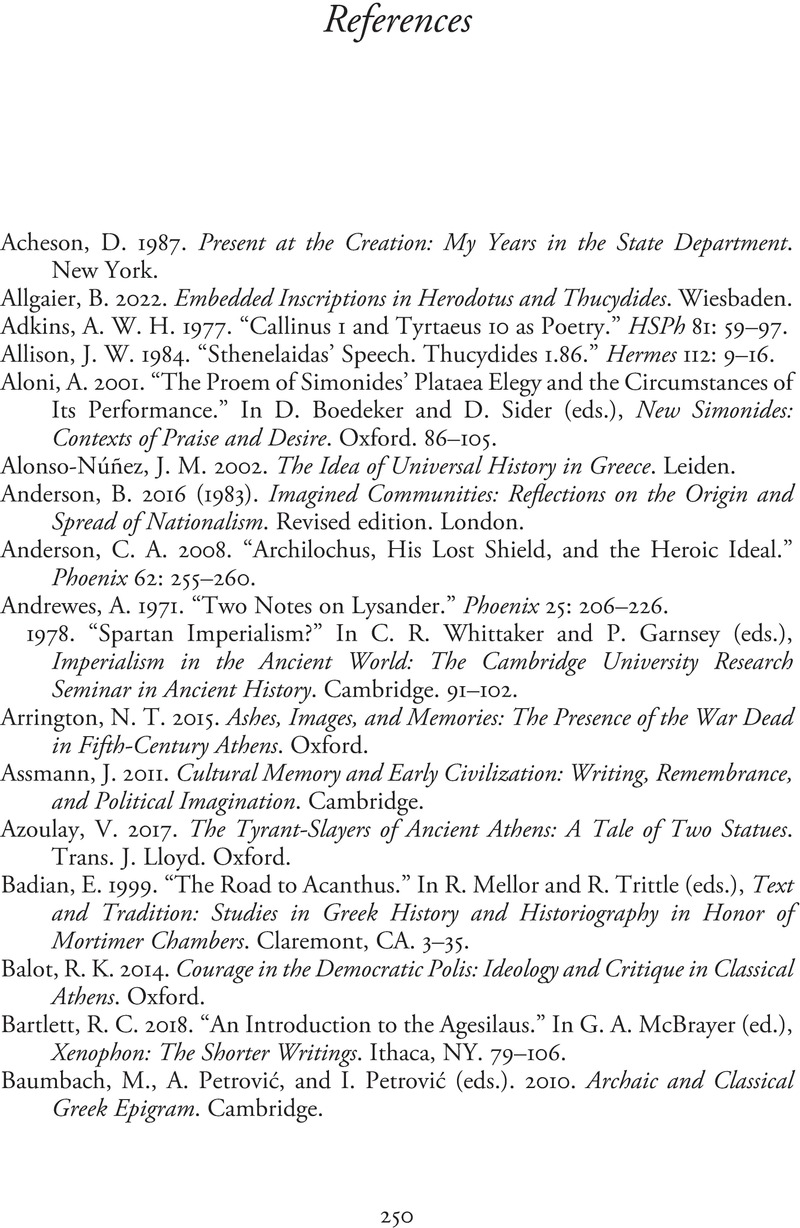Book contents
- Sparta and the Commemoration of War
- Sparta and the Commemoration of War
- Copyright page
- Dedication
- Contents
- Figures
- Maps
- Acknowledgements
- Prologue
- Chapter 1 Memory and Mirage
- Chapter 2 Warrior Poets
- Chapter 3 Few against Many
- Chapter 4 The Freedom of the Greeks
- Chapter 5 Remembering Sparta’s Other Liberators
- Chapter 6 Agesilaus, First King of Greece
- Chapter 7 From Thermopylae to 300
- Epilogue
- References
- Index
- References
References
Published online by Cambridge University Press: 08 December 2023
- Sparta and the Commemoration of War
- Sparta and the Commemoration of War
- Copyright page
- Dedication
- Contents
- Figures
- Maps
- Acknowledgements
- Prologue
- Chapter 1 Memory and Mirage
- Chapter 2 Warrior Poets
- Chapter 3 Few against Many
- Chapter 4 The Freedom of the Greeks
- Chapter 5 Remembering Sparta’s Other Liberators
- Chapter 6 Agesilaus, First King of Greece
- Chapter 7 From Thermopylae to 300
- Epilogue
- References
- Index
- References
Summary

- Type
- Chapter
- Information
- Sparta and the Commemoration of War , pp. 250 - 266Publisher: Cambridge University PressPrint publication year: 2023

